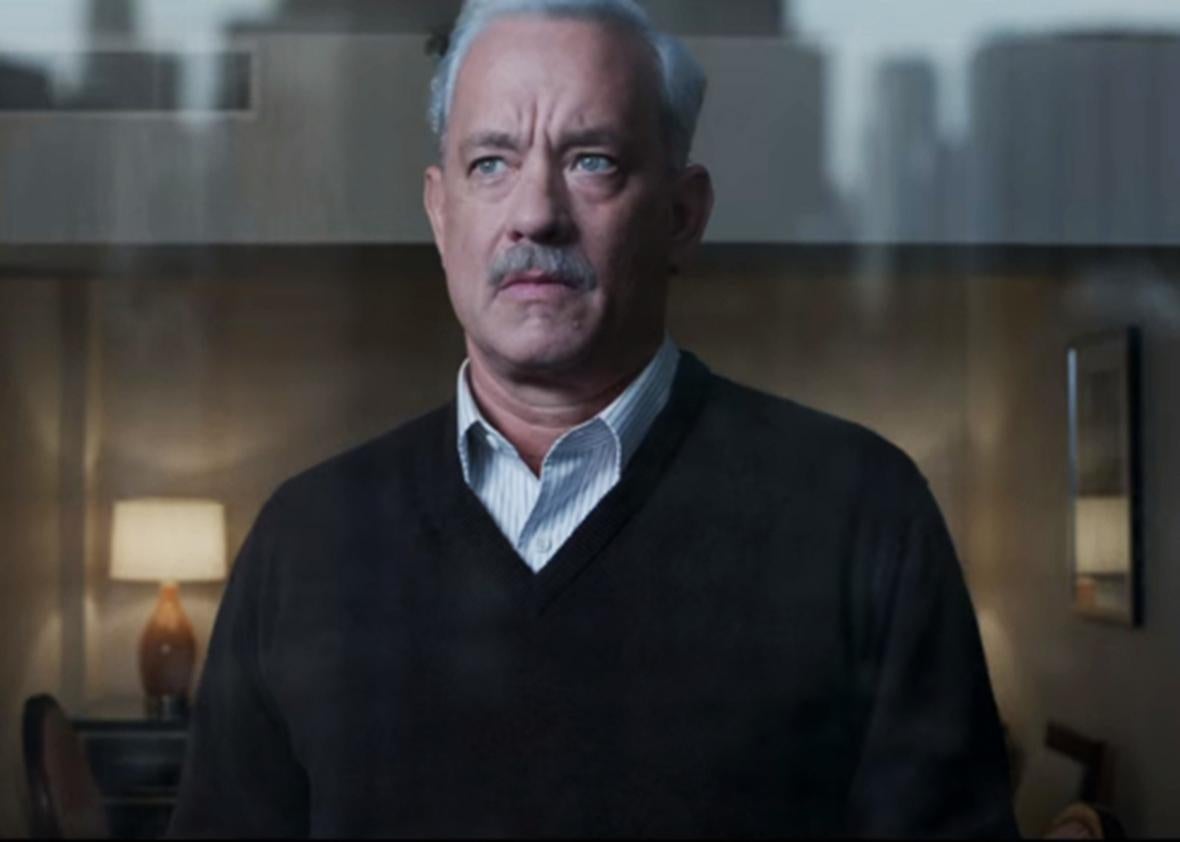The real-life story of Capt. Chesley Sullenberger doesn’t come with a villain (well, unless you count the geese), so of course Clint Eastwood’s hit movie Sully had to invent one. And that’s fine. There’s no problem with using artistic license to inject a true story with the kind of conflict you need to fuel a feature-length Hollywood drama. And as Slate’s Dana Stevens put it in her review, “Isn’t Sully, of all the lionized male figures in recent American history, among the most … unsullied?”
But the conflict Sully invents is a fantasy that aligns itself with some of the dumbest and most dangerous ideas of our era. By making an enemy of bureaucrats, experts, and “facts,” Eastwood has made the perfect movie for the year of the Brexit and the rise of Donald Trump.
The movie takes its time revealing itself, at first employing a Rashomonic approach to the events of US Airways Flight 1549, which only lasted about six minutes, from the jet’s takeoff at New York’s LaGuardia airport to its famous water landing in “the Miracle on the Hudson.” We see our first version of the crash landing in the movie’s opening scene—except this time the plane ends up plowing into some New York City skyscrapers. (In a movie whose release was timed with the 15th anniversary of 9/11, it’s the first of several scenes that evoke that tragedy as the specter of what could have been, conjuring up the old Onion headline “ ‘If Only Sully Had Been Flying Those Planes on 9/11,’ Grade-A Idiot Remarks.”)
Still, the flight, even seen from multiple perspectives, makes up only a small portion of the film, and the rest is about one thing: The wizened old salt-of-the-earth pilot Sully (played by Hollywood’s favorite so-called everyman, Tom Hanks) vs. the National Transportation Safety Board, government regulatory eggheads who have the gall to conduct a standard investigation of a major aeronautic incident.* Sully, the hero, defends the wisdom of his gut, developed over the course of 40 years of piloting. The movie makes a villain of the technocrats with their scientific method and their acronyms (“QRH”? “APV”?) and their newfangled computer simulations, which they use to suggest that Sully could have landed the hobbled jetliner on a nearby runway instead of setting down in an icy river. (“They’re playing Pac-Man and we’re flying a plane full of human beings,” Aaron Eckhart’s co-pilot growls, through his matching Sully-esque moustache.)
This conflict reaches its climax in a scene that’s completely, well, trumped-up. Sully prevails by requesting that the NTSB redo the simulations while making one crucial adjustment: The pilots must wait 35 seconds before turning toward one of the nearest airports, in an approximation of the time it might take to assess the situation and make a decision. Sure enough, the test pilots all lose altitude too quickly and go down in deadly crashes just short of their landing strips. It’s a satisfying dramatic conclusion, but it’s pure fiction: In real life, it was the NTSB, not Sully, that suggested adding the 35 seconds.
The NTSB is understandably unhappy about the way it’s portrayed. According to Bloomberg, the actual safety board, if anything, went easy on Sully, giving him “softballs,” while being very careful not to seem critical of a media darling, whose work they concluded was exemplary. “There was no effort to crucify him or embarrass him,” retired NTSB specialist Malcolm Brenner, who was part of the team that interviewed Sully, told Bloomberg. “If there were questions, it was to learn things.” Robert Benzon, the since-retired NTSB vet who oversaw the investigation, and had his own decades’ worth of experience, agreed. “I think we’re getting the dirty end of the stick here,” he said. “From what I hear, this is somewhere between Sharknado 2 and Sharknado 3.” (I think someone just got NTSBurnt!)
Coming in the fall of 2016, the year in which a conservative British politician famously said “I think people in this country have had enough of experts,” and Stephen Colbert can sum up a spreading feeling by joking, “You know who had a brain? Adolf Hitler,” it’s no surprise that the movie seems on course to become, like American Sniper, an unexpected blockbuster. After all, it’s the perfect cinematic encapsulation of what so many feel in 2016: Facts don’t matter; scientific evidence is for saps; what’s most important is what you feel in your gut (about Muslims, about women, about the economy).
Perhaps all this shouldn’t be surprising coming from Sully director and apparent Trump supporter Clint Eastwood, fresh off the similarly fact-averse American Sniper, who talks about the kids today as the PC “pussy generation,” has summed up his libertarian beliefs about the role of government with the phrase “leave everybody alone,” and thinks of Hillary Clinton as “a tough voice to listen to for four years.” (One of the lead NTSB investigators is played by Breaking Bad’s Anna Gunn, who knows a thing or two about being a voice that men don’t want to listen to.) Or from his screenwriter, Todd Komarnicki, an outspoken Christian who thinks the internet could be the end of storytelling itself, and who has compared the NTSB investigators to the biblical “accuser,” i.e. Satan.
In the end, after the bureaucratic poindexters are proven wrong, and the perceptions of this older white man are vindicated, all that’s left is to crack wise. In the movie’s final scene, the pilots emerge so saintly and spotless that the only “regret” they confess is just a punch line: “I would’ve done it in July.” After the movie fades to black, over the laughter of the entire hearing, you realize there never was any reason for all this drama. The joke was on you.
*Correction, Sept. 16, 2016: This article originally misidentified the National Transportation Safety Board as the National Transportation Security Board. (Return.)
